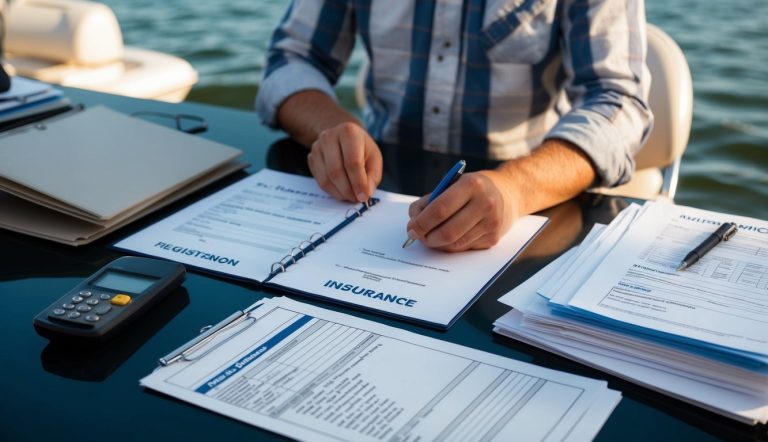Shipping a jet boat involves more than just finding a transport company. You need to gather the right paperwork to ensure your vessel moves legally and efficiently across locations. Having the proper documentation ready before shipping your jet boat can save you time, money, and unnecessary headaches during the transport process.
Whether you’re moving to a new state or sending your boat overseas, paperwork requirements may vary depending on your situation. From ownership proof to insurance documents, each piece of paper serves an important purpose in making sure your valuable jet boat arrives safely at its destination.
Bill of Lading
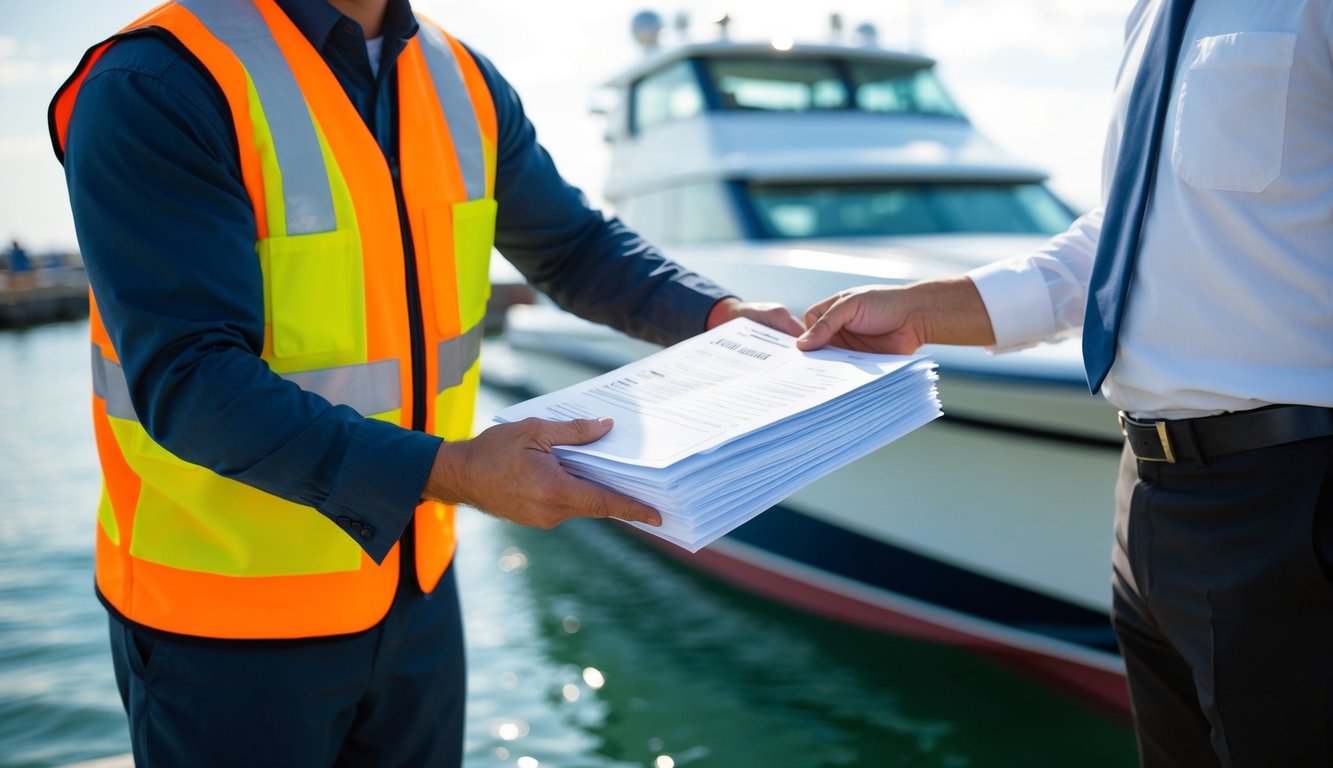
- When shipping a jet boat, the Bill of Lading (BOL) is a critical document you must have. This document serves as evidence of your shipping contract and provides details about your jet boat.
- Your Bill of Lading acts as a receipt for your jet boat and proves ownership during transit. It’s similar to the paperwork required when shipping jet skis or other personal watercraft.
- The BOL needs to include shipper and consignee information. This means your contact details and the recipient’s information must be clearly listed.
- You should also include the date of shipment and any purchase order or reference numbers related to your jet boat transport.
- The document must accurately describe your jet boat, including its dimensions, weight, and value. This information helps carriers handle your vessel properly.
- When shipping internationally, the BOL becomes even more important as it works alongside other required documents like commercial invoices and permits.
- Remember to keep a copy of the BOL for your records. The carrier will also maintain a copy throughout the transportation process.
Commercial Invoice

- When shipping a jet boat internationally, a commercial invoice is absolutely essential. This document serves as the foundation for your entire shipping process.
- The commercial invoice must include detailed information about your jet boat, including its value, country of origin, and description. You should prepare multiple copies of this document – typically three are recommended.
- Every international shipment requires a commercial invoice, preferably printed on your company letterhead if you’re a business. This makes the document look more professional and credible.
- For jet boats specifically, you’ll need to list the hull identification number, engine specifications, and manufacturing details. Be thorough and accurate with this information to avoid customs delays.
- When shipping to the US, you cannot begin the shipping process without a properly completed commercial invoice. Customs officials will use this document to determine applicable duties and taxes.
- Ensure all values are accurate and match your other documentation. Any discrepancies could lead to significant delays or even rejection of your shipment.
Certificate of Title

- When shipping a jet boat, one of the most critical documents you’ll need is the Certificate of Title. This legal document proves you own the boat and is essential for the shipping process.
- If you’ve recently purchased the boat, make sure the title has been properly transferred to your name. The title should be signed by the previous owner and officially registered with your state’s boating authority.
- What if you don’t have the title? This can create complications. If you purchased a boat without a title, you’ll need to work with your state’s boating agency to obtain proper documentation before shipping.
- Some states offer temporary registration that may be valid for up to 60 days while you complete the title process.
- Keep your title in a safe place during the shipping process. The shipping company may request to see it, and you’ll certainly need it once your boat reaches its destination.
Certificate of Registration

- When shipping a jet boat, you need to have your Certificate of Registration on board. This document proves you legally own the boat and have registered it with your state’s boating authority.
- Your boat must be properly numbered and have a current state use sticker. The registration certificate must be kept on the boat whenever it’s in operation or being transported.
- To register your boat initially, you’ll need a driver’s license or other government-issued identification. The registration process typically requires submitting paperwork at your local license office.
- If your boat is federally documented instead of state registered, you’ll need your United States Coast Guard federal documentation instead. Federal documentation serves a similar purpose for larger vessels.
- Remember that registration requirements vary by state, so check your local regulations before shipping your jet boat.
Import/Export Permits

- When shipping a jet boat internationally, you’ll need specific permits to clear customs. The most important document is the EPA Engine Declaration Form 3520-21, which proves your boat meets EPA standards.
- You must provide proof of ownership when importing your jet boat. This typically includes your bill of sale and vessel registration documents. If you purchased the boat with a loan, you’ll need a letter of lien release from your financial institution.
- Personal identification is also required for import/export procedures. Be ready to submit a copy of your passport, ID, or driver’s license to customs authorities.
- For boats coming from Canada, additional documentation may be needed. Check with customs brokers about specific requirements for your departure and arrival countries.
- Obtaining these permits typically requires submitting applications weeks before your planned shipping date. Some countries have stricter regulations than others, so research the specific requirements for your destination country.
EPA Engine Declaration Form 3520-21
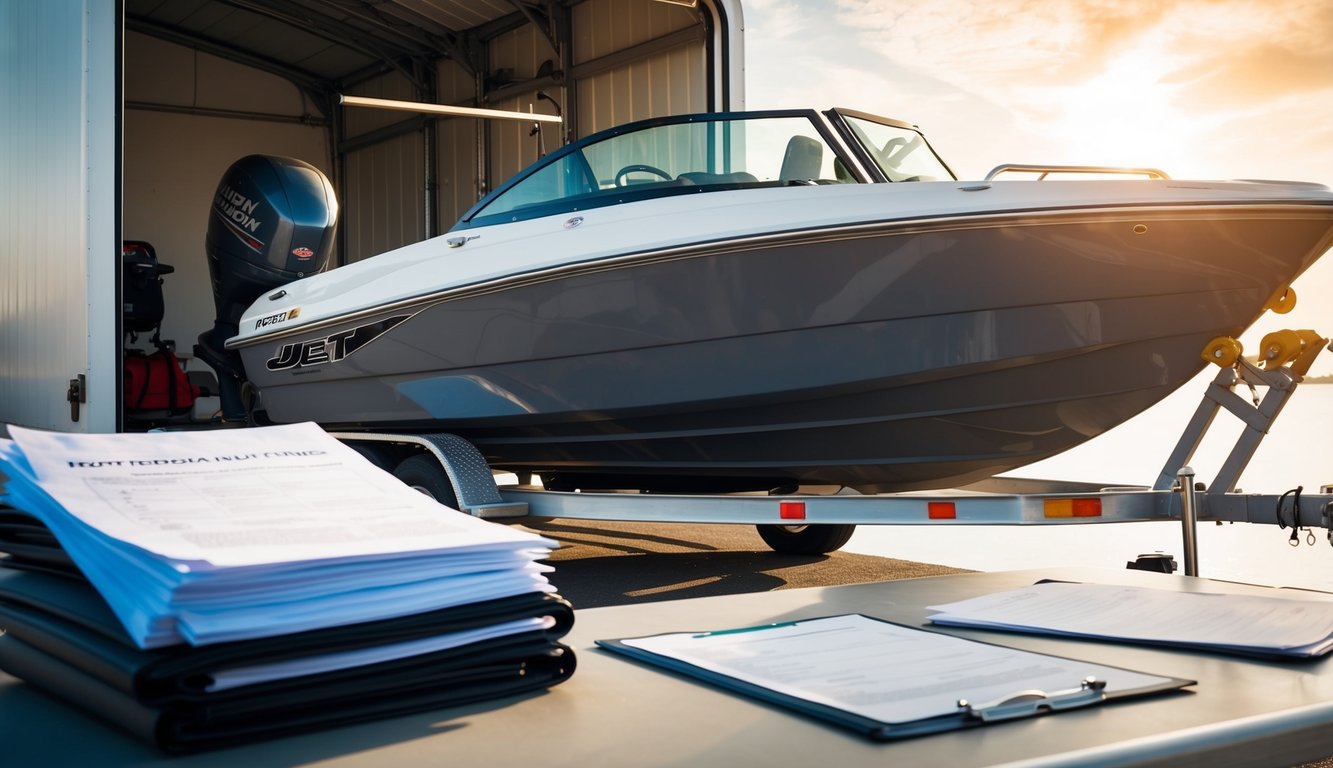
- When importing a jet boat into the US, you need to complete the EPA Engine Declaration Form 3520-21. This form is required for all imported engines, including marine engines in your jet boat.
- You must submit one form per engine or for a group of engines in a single shipment. The form requires detailed information that fully describes each engine in your jet boat.
- The EPA Standard Form 3520-21 is specifically designed for importing heavy-duty highway engines and nonroad engines, including marine engines. The latest version from August 2024 is available on the EPA website.
- This form serves as proof that your boat meets EPA standards. If you’re importing your jet boat from Canada, this documentation is particularly important for the customs process.
- Each form must be prepared by you as the importer for every engine in your jet boat. The customs officials will check this form when your shipment arrives at the border.
- Make sure all sections are filled out correctly to avoid delays in the import process. Incomplete forms may result in your jet boat being held at customs.
Proof of Insurance

- When shipping a jet boat, proof of insurance is a critical document to have ready. You’ll need to provide this paperwork to your shipping company before transport begins.
- Most transport companies require you to show valid insurance coverage for your jet boat during transit. This protects your investment if something happens during shipping.
- The federal government requires trucking companies that transport boats to maintain at least $100,000 worth of cargo insurance. Your personal boat insurance may need to be supplemented for the shipping process.
- You should keep copies of your insurance paperwork readily available. These documents prove you have financial protection for your vessel during transit.
- Transport companies will typically ask to see your insurance paperwork before loading your jet boat. Have both digital and physical copies ready to share.
- Some shipping services might offer additional insurance options. Consider these carefully based on your jet boat’s value and your comfort level with risk.
- Check with your current insurer to confirm your jet boat is covered during transport. Some policies have exclusions for commercial shipping that you’ll want to address beforehand.
Letter of Lien Release

- When shipping a jet boat that has a loan on it, you’ll need a letter of lien release. This document proves that any financial claims against your boat have been satisfied.
- If you’ve finished paying off your loan, you must obtain this release from your lender. The lienholder can provide you with a Notice of Recorded Lien (MV-901) or an official letter stating the lien has been satisfied.
- Make sure the letter includes your boat’s identification number, your name, and a clear statement that the lien has been released. The document should be signed by an authorized representative of the lending institution.
- For boats registered in New York, you’ll need to submit this with your boat registration/title application if you’re updating ownership records before shipping.
- Keep copies of all lien release documents for your records. This protects you if questions arise during or after shipping.
- Without proper lien documentation, you may face delays in shipping or transferring ownership of your jet boat. Shipping companies often require proof that no financial claims exist against the vessel being transported.
Owner’s Identification Document
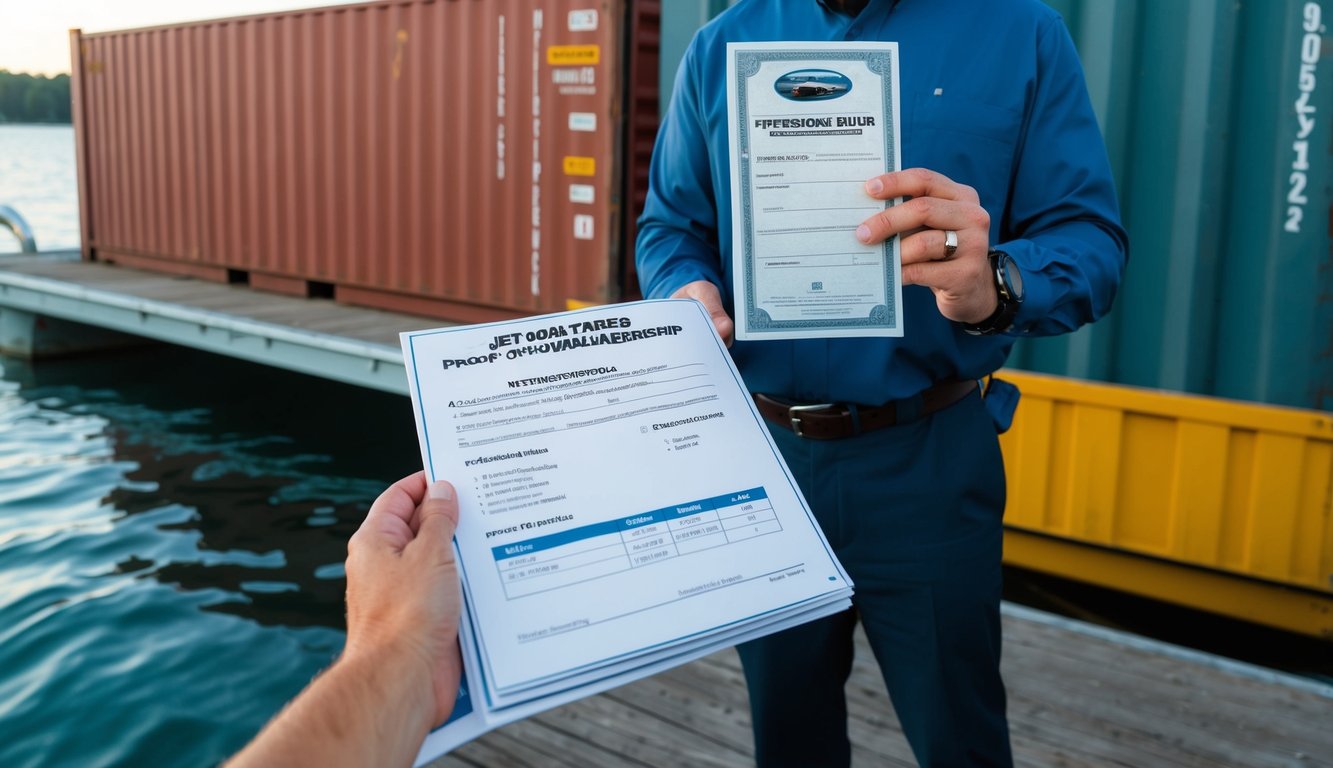
- When shipping a jet boat, you need valid identification to prove you’re the legitimate owner. A government-issued ID like your driver’s license is typically required for boat registration and shipping procedures.
- Most shipping companies and registration authorities require your ID to match the ownership information on the boat’s title. This helps prevent fraud and ensures the boat is being legally transported.
- Your ID must be current and not expired. The name on your identification should exactly match the name on the vessel title and registration documents.
- If you’re shipping internationally, you might need additional identification such as a passport. Check with your shipping company for specific requirements.
- Keep a copy of your ID with your shipping paperwork. This makes the process smoother if questions arise during transit.
- Remember that proper identification is essential for both boat registration and shipping. Without it, your shipment could face delays or be rejected entirely.
Trailer Vehicle Identification Number (VIN)
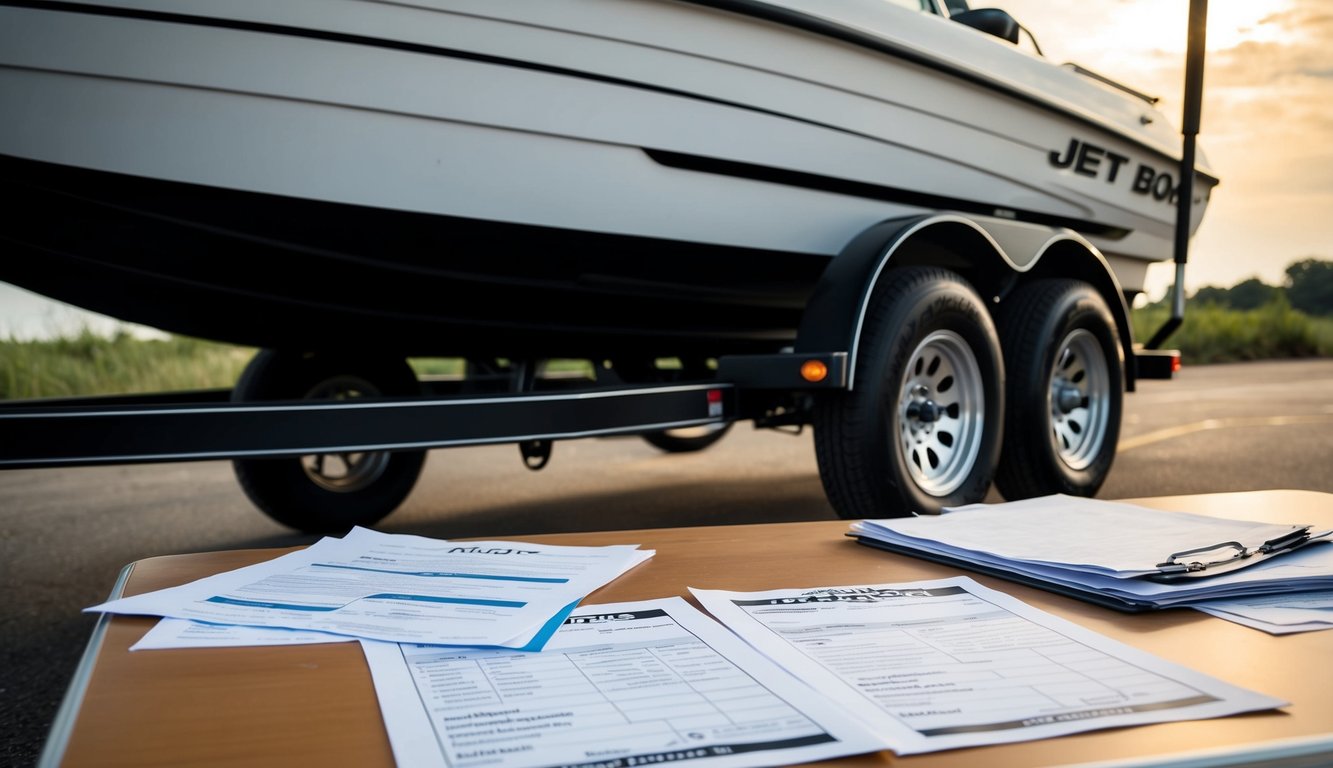
- When shipping a jet boat, the trailer’s Vehicle Identification Number (VIN) is a crucial piece of documentation you need to have ready. This unique code identifies your specific trailer and is required for registration and transportation purposes.
- All legal trailers must have a VIN permanently attached to the frame. You can typically find this number stamped on the trailer frame, often on the front left side or on the tongue of the trailer.
- If your trailer doesn’t have a visible VIN, you may face complications during shipping or when crossing state lines. The DMV can issue you a VIN number to be stamped onto the trailer frame if yours is missing.
- Before shipping, take a photo of the trailer VIN and include it with your documentation. This helps verify ownership and speeds up the process if questions arise during transport.
- Your trailer will need to go through your state’s department that handles vehicle registration. Having the VIN documentation ready will make this process smoother.
- Always keep a copy of the trailer registration showing the VIN with your shipping paperwork. This proves you’re the legal owner of both the boat and its trailer.
